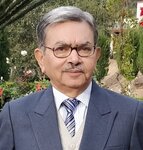The Number of Bi-Unitary Divisors of an Integer-II
Abstract
It is well-known that a divisor d > 0 of the positive integer n is called unitary, if dδ = n and (d, δ) = 1. For integers a, b not both zero, let the symbol (a, b)** denote the greatest unitary divisor of both a and b. A divisor d>0 of the positive integer n is called bi-unitary, if dδ = n and (d, δ)** = 1.Downloads
Metrics
Downloads
Published
How to Cite
Issue
Section
License
Copyright (c) 1975 D. Suryanarayana, R. Sita Rama Chandra Rao

This work is licensed under a Creative Commons Attribution 4.0 International License.
References
B. GORDON AND K. ROGERS, Sums of the divisor function, Canad. J. Math. 16(1964), 151-158.
G. H. HARDY AND E. M. WRIGHT, An introduction to the Theory of Numbers, Fourth edition, The Clarendon Press, Oxford, 1965.
G. A. KOLESNIK, An improvement of the remainder term in the divisors problem, Mat. Zametki 6(1969), 545-554=M«/A. Notes of Sciences of the USSR 6 (1969), 784-791.
D. SURYANARAYANA, The number of bi-unitary divisors of an integer, Lecture notes in Mathematics, Vol. 251, The Theory of Arithmetic Functions, Springer-Verlag, Berlin-Heidelberg-New York, 1972, pp. 273-282.
D. SURYANARAYANA AND R. SITA RAMA CHANDRA RAO, Distribution of Unitarily £-free integers, J. Austral. Math. Soc. 20 (1975), 129-141.
 D. Suryanarayana
D. Suryanarayana

 7
7